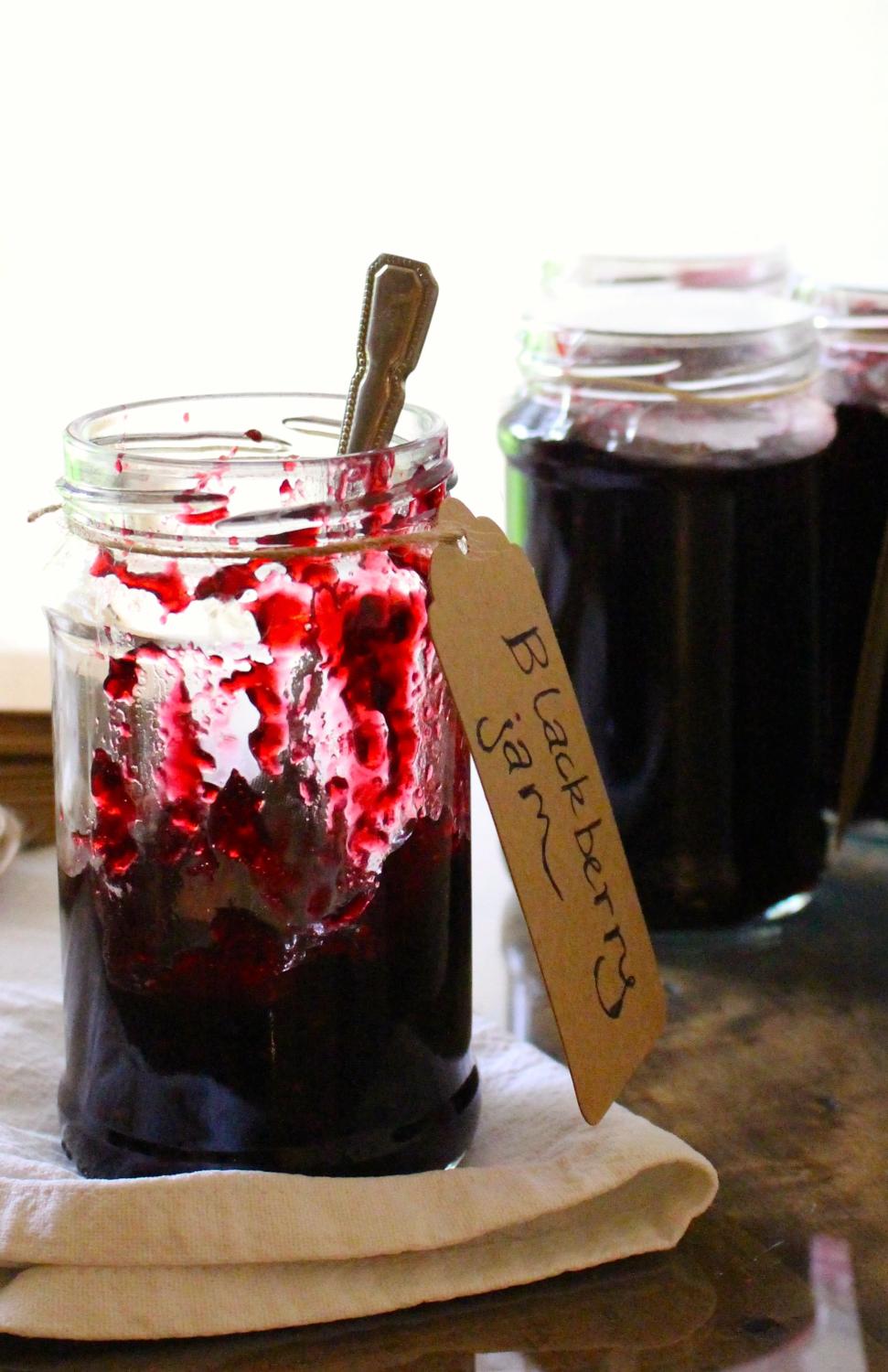In the last few days, it has seemed like autumn has begun to make a surprisingly early appearance at the Mill. This morning, there was even a slight frost on the ground, making it feel much more like a crisp September than mid-August. Blackberries are one of my favourite flavours of autumn, working beautifully in cobblers, crumbles, compotes, sauces, cordials and jams. They have started to appear abundantly in the hedgerows surrounding the Mill, so I have preserved a batch of them into my simple blackberry jam recipe – perfect for spreading on hot buttered toast, or layering in Victoria sponge cake with plenty of cream.
Practical tip: Make sure you sterilise your jam jars beforehand, and store the jam in a cool, dry place. It will keep for up to one year if stored correctly. Once opened, store in the fridge.
Equipment: for bottling the jam, you will need wax paper jam cover discs, cellophane jam pot covers (or an airtight alternative of your choice), elastic bands to secure, and sterilised jam jars.
Makes approximately 1.6kg of jam (roughly 4-5 pots of jam, depending on your jam jar size).

